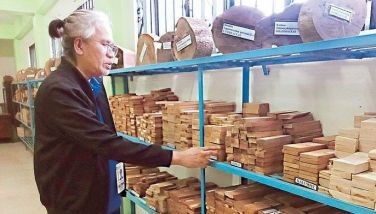2.9 million families experienced hunger in Q3 – SWS

MANILA, Philippines — Some 2.9 million Filipino families experienced involuntary hunger at least once in the third quarter of the year, a survey conducted by Social Weather Stations (SWS) showed.
Results of the Sept. 29 to Oct. 2 survey released over the weekend showed that 11.3 percent of the respondents said their families experienced hunger and not having anything to eat at least once in the past three months.
It was statistically similar to the 11.6 percent obtained in a similar survey in June, but slightly below the 12.2 percent in April and 11.8 percent in December 202.
However, it was still 1.3 points above the 10 percent reported in September 2021 and two points above the pre-pandemic annual average of 9.3 percent in 2019.
According to SWS, the October 2022 hunger rate is composed of 9.1 percent of respondents who said they experienced moderate hunger (down from 9.4 percent) and the 2.2 percent who experienced severe hunger (up from 2.1 percent).
Moderate hunger refers to those who experienced hunger “only once” or “a few times” in the last three months, while severe hunger refers to those who experienced it “often” or “always” in the last three months.
The survey showed that involuntary hunger fell in balance Luzon, but rose in Metro Manila, the Visayas and Mindanao.
Involuntary hunger remained highest among those in Metro Manila at 16.3 percent (from 14.7 percent), followed by Mindanao at 15.3 percent (from 14 percent), rest of Luzon at 9.6 percent (from 11.9 percent) and the Visayas at seven percent (from 5.7 percent).
Based on the survey, some 16 percent of those who rated their families as poor experienced hunger in the past three months, up from 15.3 percent in June.
Involuntary hunger decreased among those who rated their families as “not poor” (from 8.1 percent to 6.7 percent) and “not food-poor” (from 7.8 percent to 7.4 percent), while it hardly moved among those who rated their families as “food-poor” (from 19 percent to 18.9 percent).
The October survey showed that 49 percent of respondents rated their families as poor, 29 percent as borderline poor and 21 percent as not poor.
Some 34 percent of respondents also rated their families as food-poor, defined as being poor based on the food they eat, 38 percent as borderline food-poor and 28 percent as not food-poor.
The survey had 1,500 adult respondents and a margin of error of plus or minus 2.5 percent for national percentages.
- Latest
- Trending






























